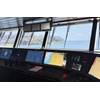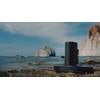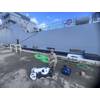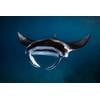Sonar: Critical to Bridge Demolition, Recovery
What happens when a bridge or other structure is no longer in use and needs to be removed? There are several options, the most exciting of which is demolition.
These jobs require caution and careful planning to guarantee safety and ensure that debris does not cause damage to the local waterways or roads. Four of the most common methods are bursting, hydraulic breakers, dismantling, and explosives.
The Historic 1936 Highway 47 Bridge over the Missouri River was demolished this past spring. The old bridge was located 12’ from the new bridge that was built over the past several years. Being as close as it was, the demolition had to be precise, accurate, and safe. On April 11, 2019 the bridge was demolished via strategically placed explosives. According to the Missouri Department of Transportation (MoDOT), officials were “very pleased with the demolition of the old Highway 47 bridge.” The blast dropped the roughly 2,000-foot span using 145 pounds of explosives, 750 individual charges, and 8,000 feet of detonation cord. Once the demolition was complete, the underwater recovery tasks began and modern technology was needed to locate the pieces for safe and efficient removal.
Three Rivers Diving, Inc. was tasked with locating the pieces of the Highway 47 Bridge from the Missouri River waterway after demolition. Modern technology provided Three Rivers with the right tool for the job – a JW Fishers Side Scan Sonar System. The sonar system “removes the water,” permitting the operator to see all debris and allowing safe removal via mechanical cranes and heavy lifting devices. Steve Philips of 3 rivers diving states “we mount the side scan on a fixed beam to the bow of the boat. We then adjust the depth to approx. 10’ underwater and begin our search” The side scan was used to locate the bridge section and help position a crane barge. The crane operator was shown the relative positions of the barge and the bridge section using the side scan. The operator easily located the section and hooked it via retrieval equipment and removed the section. Philips also stated “We located the bridge sections in a matter of minutes. Positioning the barges in the high current and flood waters took longer than actually finding the sections!” When asked about the ease of operation and customer service Steve had plenty of pleasant things to say. “The staff at JW Fishers has always been very helpful and patient when working out any problems that we have had. The problems are usually operator error or some minor software issue when changing or upgrading computers.”
This is not the only job where the side scan sonar has come in handy for Three Rivers Diving. The company was also tasked with another removal project. This time a pier that was secured to a bridge had taken so much abuse that it fell into the water. Three Rivers Diving was asked to identify the remains and remove the debris from the water. Locating the position and prepping the site was the easy and efficient thanks to JW Fisher’s Side Scan Sonar system.














 December 2025
December 2025



